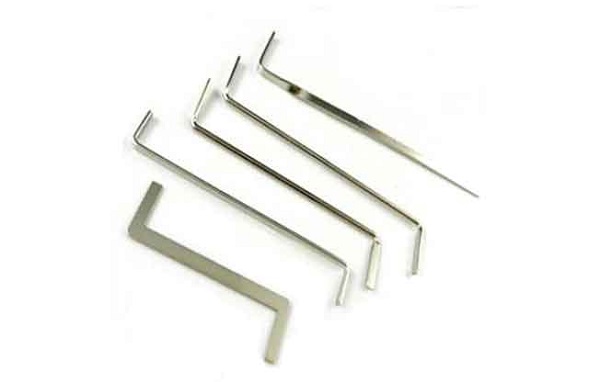Tension Wrench Guide: How to Improve Your Tension Control
2025-07-08 11:13
Tension control is the cornerstone of successful lock picking, as it determines how effectively you can manipulate pins into their correct positions. Mastering this skill requires patience, practice, and the right tools—including investing to Buy Training Practice Locks that allow you to refine your technique in a controlled environment. Whether you’re a hobbyist or a professional, understanding how to apply and adjust tension with precision can turn a frustrating attempt into a smooth, successful pick.

Why is Tension Control Crucial in Lock Picking?
Tension control is crucial because it creates the necessary friction between the lock’s plug and housing, enabling individual pins to set into place when manipulated. Without the right amount of tension, pins either won’t lift enough to clear the shear line or will bind prematurely, making it impossible to open the lock. Proper tension balances firmness and flexibility, allowing you to feel subtle feedback from the lock and adjust your approach accordingly—making it the difference between a successful pick and a stuck or damaged lock.
What are the Common Mistakes Beginners Make with Tension Wrenches?
1.Applying Too Much Pressure
One of the most frequent errors is using excessive tension, which causes pins to bind tightly and prevents them from moving freely. Beginners often assume more force will speed up the process, but this only makes it harder to feel when a pin sets and increases the risk of bending or breaking the wrench. Over-tensioning also masks the subtle feedback from the lock, leaving you unaware of whether pins are correctly aligned or not.
2.Using the Wrong Wrench Size or Type
Choosing an ill-fitting tension wrench—either too large, too small, or the wrong shape—hinders control and feedback. A wrench that’s too big may not fit properly in the keyway, while one that’s too small can slip or fail to apply consistent pressure. Beginners often stick to a single wrench type without experimenting, missing out on how different designs (like hook, rake, or pry bar wrenches) perform in various lock types.
3.Neglecting to Adjust Tension Mid-Pick
Many beginners set a fixed tension at the start and fail to adjust it as they work through the pins. Locks rarely respond to static pressure; as each pin sets, the required tension often decreases slightly. Failing to release or reduce tension incrementally can cause already set pins to disengage, forcing you to restart the process. This rigidity ignores the dynamic nature of lock picking, where adaptability is key.

What are the Best Techniques for Better Tension Control?
1.The Featherlight Initial Pressure
Start with the lightest tension possible—just enough to create slight resistance in the plug. This "featherlight" approach lets you feel each pin’s movement more clearly, making it easier to detect when a pin reaches the shear line. Practice applying this minimal pressure by starting with an empty keyway, focusing on maintaining a steady, gentle force before introducing a pick. Over time, this builds muscle memory for the subtlety required.
2.Incremental Tension Adjustment
As you lift each pin, gradually reduce tension in small increments. When a pin sets, you’ll feel a tiny "click" or release; this is your cue to ease up slightly to prevent binding. This technique, often called "staged tensioning," ensures that already set pins stay in place while allowing you to work on the remaining ones. It requires patience but drastically improves accuracy, especially in locks with varying pin heights.
3.Practicing with Variable Tension Drills
Dedicate time to drills that focus solely on tension, separate from picking. For example, use a clear practice lock to observe how different tension levels affect pin movement, or try picking the same lock with varying degrees of pressure to note how feedback changes. These drills train your hand to adjust tension instinctively, turning conscious effort into reflex over time.
Improving tension control is a journey that combines knowledge, practice, and the right tools. By avoiding common mistakes, mastering adjustable pressure techniques, and investing in quality equipment—including the decision to Buy Tension Tool Wrench Set that offers variety and precision—you’ll build the skills needed to tackle even the most challenging locks. Remember, every expert was once a beginner; consistent practice with focus on tension will transform your lock picking from a trial-and-error process into a confident, controlled skill.

 Like Us on Facebook to enjoy 5% discount
Like Us on Facebook to enjoy 5% discount